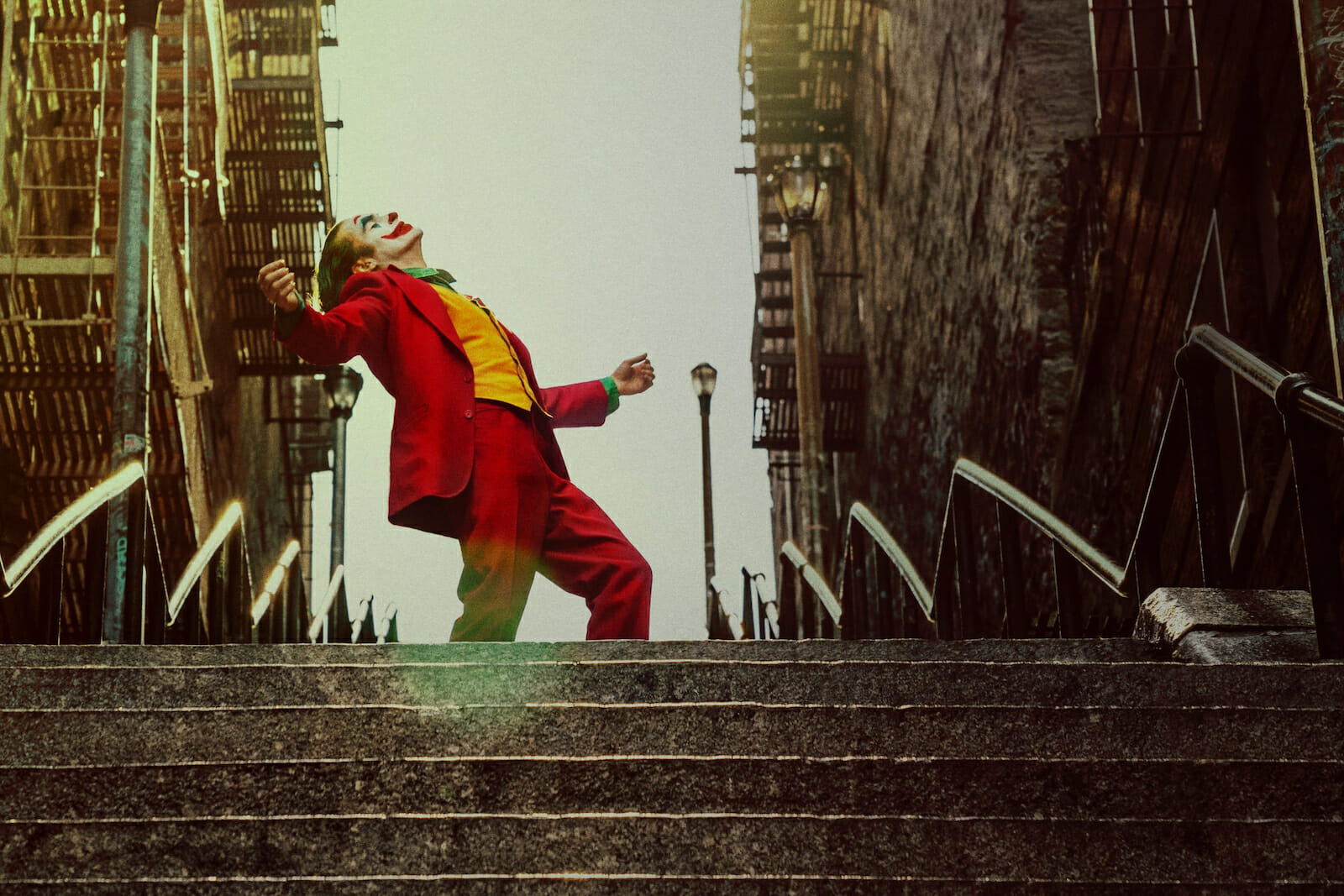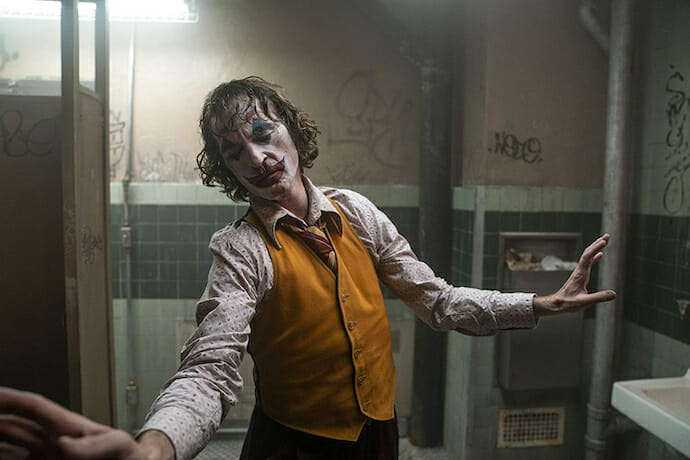
‘Joker’ Review
The first thing to know about Joker is that this is not a superhero movie. In fact, there are no heroes in the movie – unless you would like to apply the label to a single mom who lives down the hall from Arthur Fleck. Mr. Fleck lives at home with his invalid mother in a grungy, run-down apartment. He works as a clown-for-hire, dreams of becoming a stand-up comedian, and depends on social services to supply the 7 medications he takes since being released from Arkham State Hospital. It’s a bleak existence at a bleak time in a bleak city. Gotham is in the midst of a garbage workers’ strike (only the ‘super rats’ are happy), political upheaval, and a growing chasm between the classes.
The second thing to know is that this is a standalone Joker film, and one mostly unrelated to previous projects featuring the colorful Clown Prince character played (and voiced) by such memorable actors as Cesar Romero, Jack Nicholson, Heath Ledger, Mark Hamill, Jared Leto, and even Zach Galifianakis. Director Todd Phillips (who co-wrote the script with Scott Silver) is best known for such extreme comedies as The Hangover franchise and Old School, so he’s a bit outside of his usual wheelhouse. Phillips and Silver seem to embrace not just the history of the character, but also the look, texture, and tone of filmmaking from an earlier era. The gritty and outcast feel of Scorcese’s Taxi Driver and The King of Comedy is present, and so are numerous tributes to familiar Joker moments of days gone by.
Three-time Oscar nominee Joaquin Phoenix plays Arthur Fleck, and he delivers Arthur’s slow descent into madness, or shall we say further descent. It’s clear from the beginning that Arthur views himself as ignored by society, while all he wants to do is bring joy and laughter to others…and be noticed. His daydreams or visions of himself in a better world send a strong message. Phoenix shows us what full commitment to a role looks like. He lost 50 pounds, leaving a frame that contorts, moves and dances in a manner unlike what we’ve seen before. In fact, it’s a toss-up on which shows up more frequently, his dances moves or his maniacal, pained laughter. We are informed Arthur suffers from Pseudobulbar Affect, also known as emotional incontinence, which causes that creepy laughter to pop up at some inappropriate times. Of course, the comparisons to Heath Ledger’s Oscar-winning turn in The Dark Knight are inevitable. The roles and films are written quite differently, and it’s safe to say both actors were all-in.
Action sequences and special visual effects are both noticeably absent, but the violence is sure to shock. This is not one for the younger kids, no matter how much they enjoy any other DC or Marvel film. This gritty, visceral approach is often a tough watch, and is much more a character study of mental illness than a costume drama…although Arthur’s clothes and make-up are front and center. When Arthur states, “I have nothing but bad thoughts,” we believe him. And the sympathetic back story explains a great deal, and will likely prove quite controversial.

Phoenix dominates the film (as he should), and supporting work is provided by Robert De Niro as Murray Franklin, a TV talk show host in the Johnny Carson mode; Zazie Beetz (Deadpool 2) as the single mom neighbor Sophie Dumond; Frances Conroy as Penny Fleck, Arthur’s mother; Brett Cullen as a not so empathetic Thomas Wayne; and Shea Whigham and Bill Camp as police detectives. I’ll hesitantly mention that Dante Pereira-Olson makes a couple of brief appearances as an adolescent Bruce Wayne, and just for fun, we get a shot of the young man honing the batpole skills he will use later in life. Just don’t expect any “real” Batman references.
Director Phillips delivers a film that looks and feels and sounds much different than other comic book movies. Cinematographer Lawrence Sher is a frequent Phillips collaborator (all 3 Hangover movies) and the dark look and gritty feel are present in almost every shot. Hildur Guonadottir (this year’s Emmy winner for “Chernobyl”) serves up a foreboding score – one that never overwhelms, and one that contrasts perfectly with the more traditional songs utilized throughout: Stephen Sondheim’s “Send in the Clowns,” Jimmy Durante singing “Smile,” Cream’s “White Room,” “That’s Life” by Frank Sinatra, and Gary Glitter’s familiar “Rock and Roll Part 1 and 2.” “The “Smile” song is especially relevant as its origins can be traced back to Charlie Chaplin’s Modern Times, a silent movie classic featured in this film. Phillips even uses the Saul Bass-designed Warner Bros. logo to open the credits, making sure we understand the time period (no cell phones, etc).
The film traces Arthur’s slide into crime…a transition that he wasn’t seeking, and one that he believes was forced upon him. His rise as a savior to the working class is secondary to his own journey, and the chaos is handled on the perimeters of the film, preventing this from becoming a Super Villain movie. Keep in mind Joker played at Venice, Telluride, and Toronto – three prestigious festivals. This is just another thing that sets it apart from others in the genre. Despite the 1981 timestamp, the consistent anti-rich message and class disparity is prevalent throughout. This appears to be Phillips’ way of including a contemporary theme in a decades-old setting. It’s a cautionary tale that there should be no clown left behind.

